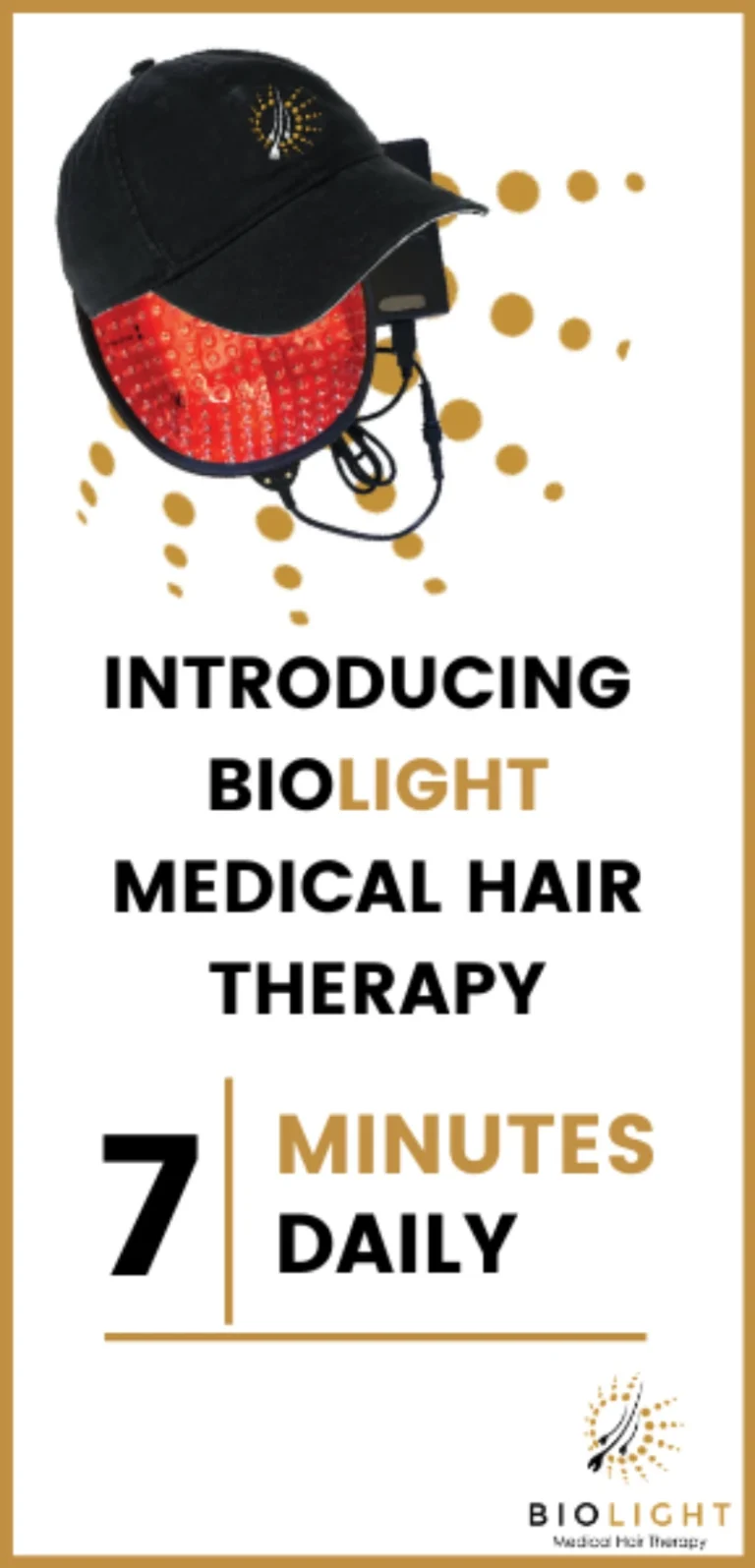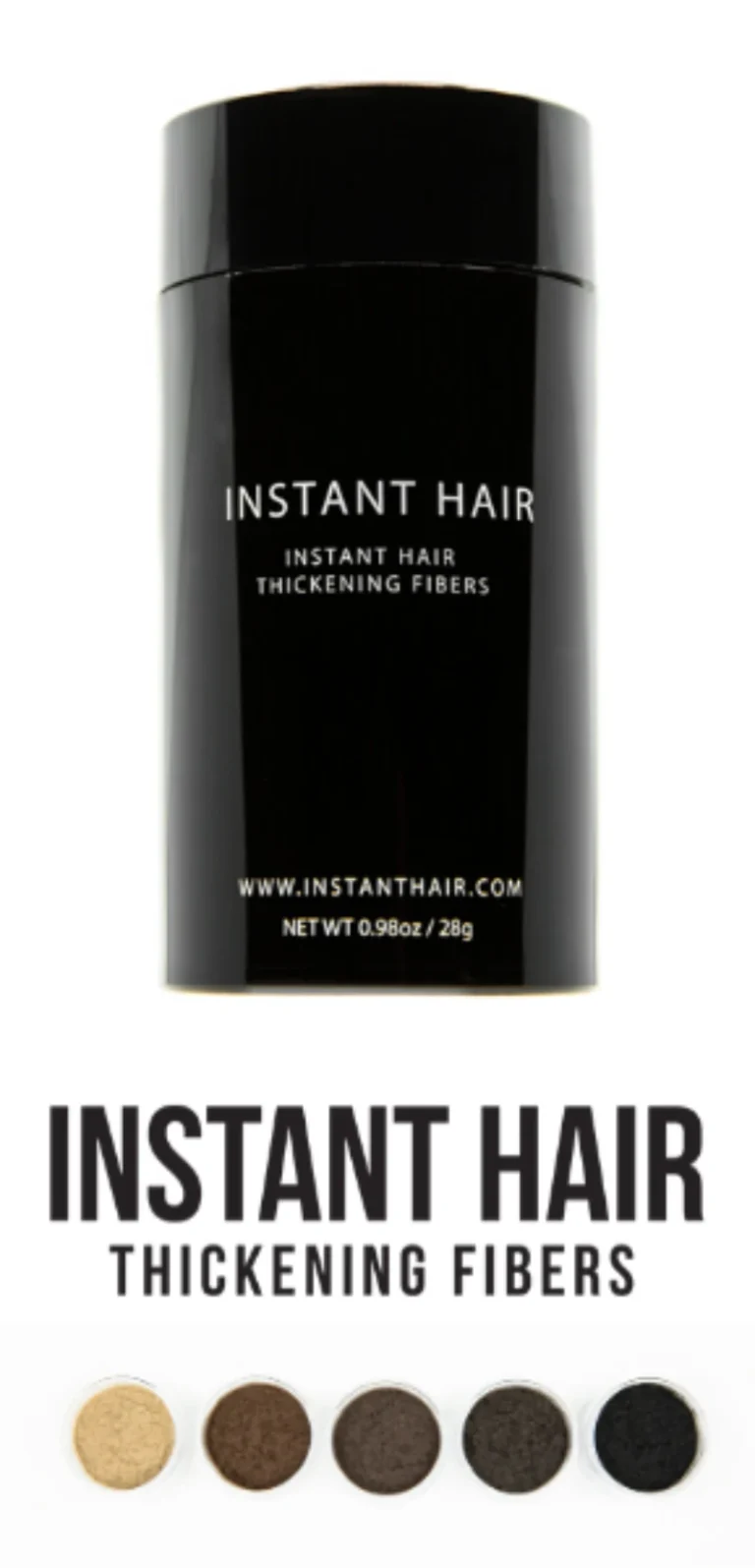Let’s Start With Hair Loss
If it’s your first time here, we know the abundance of hair loss information is overwhelming. We’ve created this page with some of our very best resources to get you started.
- Home
- Getting Started
- What Is Hair Loss

Toronto Hair Transplant Surgeons are internationally known for our pioneering work in hair transplantation.
STAGE 1
If you’re like most of our visitors, you have either already experienced some hair loss, have a genetic predisposition you’re aware of, or you need some assistance to achieve a certain look. You aren’t talking about this with a lot of people – maybe you’ve seen your family doctor, maybe a friend or family member suggested you investigate things.
You’re looking for a great starting point – real information, science and facts. From experts in the field who know the importance of providing truthful and quality information to you.
- Causes of Hair Loss
- What is Hair Loss
- Hair loss affects everyone
- Types of hair loss in Men
- What else can be causing your hair loss?
- The three main options for those dealing with hair loss
- Do hair loss treatments actually work?
- What about side effects?
- What Other Options do I have?
- Hair Loss Scam or Miracle?
- Types of products to avoid
- Should I get a hair transplant immediately?
- How will I know what treatments will work for me?
What Is Hair Loss?
After 25+ years in practice, we know that it’s best to have a conversation when everyone is speaking the same language. So we’re going to start you off here with some of the basics and let’s see if we can clear up some of your concerns and get a feel for where things are at before jumping to the conclusion that a hair transplant is the way to go for you!
DISCLAIMER: please note as you continue – the information we present here is for informational purposes only and does not constitute specific medical advice. For medical advice – we recommend that you see your family physician or meet with one of our Doctors for a virtual consult.
We have to start with what is hair loss…or perhaps more simply put, when should you become concerned about your hair loss?
First things first. It is quite normal to lose some hair every day. To understand why this is, let’s explain how your hair grows.
Our Results
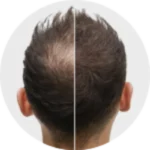
Toronto Hair Transplant Surgeons are internationally known for our pioneering hair transplantation work.
Our huge archive is here to help you see what we can do for you. Use the link below to view some sample cases.
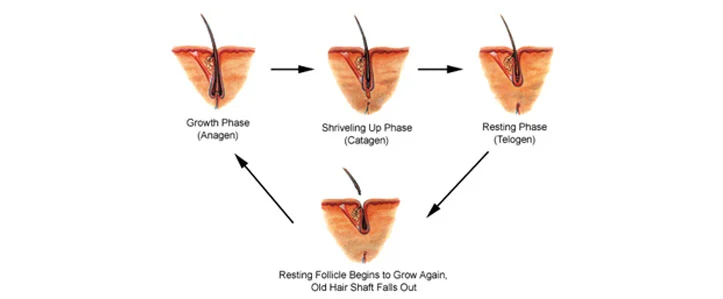
On average, hair grows at the rate of 0.3 to 0.5 millimeters every day. Hair growth per month is approximately about half an inch, which equals six inches of growth per year. Remember, hair grows faster when the weather is warm.
Normally, about 85 to 95 percent of the hair on your head is growing and the other 5 to 15 percent is in what’s called the resting stage. After the resting period, this hair then begins to fall out. This is known as hair fall. Despite the feeling of slight panic when you see a ball of it in the sink or on your brush, rest assured – it’s a very normal part of hair growth. Once those hairs are gone, they are replaced with new growth.
A person’s head has tens of thousands of hairs, and the average person loses about 100 hairs a day. (Seems like a lot, right!?)
Hair loss, however, is quite a different thing. In males, it is often called “male pattern baldness “and it is caused by the male hormone, testosterone. When testosterone is changed chemically, by an enzyme in the skin (5-alpha reductase), it becomes known as dihydro-testosterone (or DHT).
It’s important to know that DHT acting alone does not cause hair loss. Hair loss occurs only when DHT comes into contact with hairs that are genetically programmed to suffer under its influence.
This means that hair loss happens due to a combination of two factors: the hormone DHT, plus the fact that you have inherited genes that cause your hair to be sensitive to DHT. These genes might come from either your father or mother, they sometimes skip a generation and they might affect one brother (or more rarely, a sister) but not necessarily all siblings.
The good news is that this genetic predisposition to hair loss generally affects only certain parts of the scalp, typically the top of the head and the crown. The hairs in the fringe, and notably at the back of the head, are not genetically sensitive to DHT.
You’ve noticed that balding men usually have a horseshoe-shaped fringe of hair surrounding a bald area, right? Now you know why!
This pattern of hair loss helps to explain why hair transplantation which transfers non-balding hairs (i.e. those that are not genetically sensitive to DHT) to bald areas, is so successful. Even in the new areas of the scalp, which were previously bald, these hairs retain their non-balding qualities.
Hair loss affects everyone
Hair loss isn’t something that just affects men. There are in fact many women who also suffer from hair loss. The most common type of hair loss women suffer from is thinning, although it’s also very possible for women to have alopecia. This is the term most people associate with hair loss – so before we go any further – let’s take you through some of the definitions of types of hair loss.
Androgenetic alopecia can and does affect both men and women. When we talk about pattern hair loss, men tend to have thinning at the crown or a receding hairline. For women though, pattern hair loss tends to cause diffuse thinning, which basically means the hair will get thin all over the scalp. For more on how hair loss affects women – click here!
Alopecia areata is a type of hair loss often triggered by stress which can appear very suddenly. Essentially, the body’s immune system mistakenly attacks its own hair follicles. When this occurs, other cells or tissues important to hair growth and maintenance become casualties. It usually causes patchy loss on the scalp, although complete hair loss is also possible.
Traction alopecia: As the name implies, traction alopecia occurs as a result of putting excessive pressure on your hair strands. This causes them to become damaged and the hair to thin out. The areas most commonly affected are the temples and hairline. Tight hairstyles and heavy hair extensions are typical culprits for this type of hair loss in women.
Telogen effluvium: Also known as diffuse hair loss, telogen effluvium causes thinning all over the top of the scalp and is usually temporary, although it can be chronic, too. Telogen effluvium is triggered by something that causes shock to your hair follicles, including events such as childbirth and pregnancy.
Anagen effluvium: generally associated with cancer treatment. The consequence of anagen effluvium is hair shedding that usually begins within a week or two after initiation of chemotherapy and is complete by 1 to 2 months after therapy. Hair regrowth timeframes post-treatment varies based on the types and duration of treatment and the individual. Eventually, your hair usually goes back to the way it used to be after the effect of chemotherapy on the hair follicle wears off.
Types of hair loss in Men
Although the root cause of male pattern baldness is the same, not all men will have the same type of balding. Because everyone has a unique biological makeup, the rate at which men lose hair varies, as does the type of balding pattern they suffer from. Below are the three main types of hair loss seen in men.
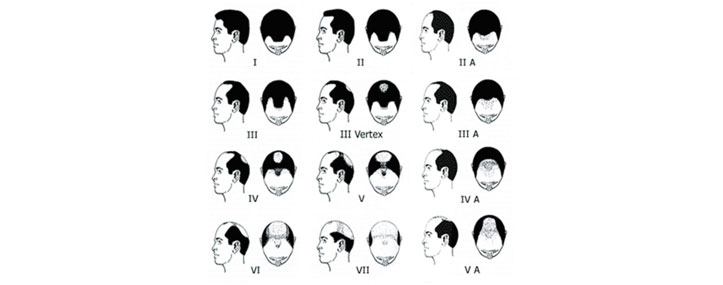
Thinning at the crown – This is a very common type of male pattern baldness and is quite self-explanatory. Men who have thinning at the crown often don’t notice their baldness pattern until it’s fairly advanced. This makes sense, since it’s out of sight and only becomes noticeable once it’s progressed considerably.
Receding hairline – Another common form of male pattern balding is a receding hairline. This is when the hair recedes at the temples and creates a V shape many men don’t find desirable. A receding hairline is usually considered to be more difficult to treat medically than thinning at the crown, although a lot of guys have had success with regrowth of hair in this area.
Diffuse thinning – Diffuse thinning is a type of male pattern balding that isn’t focused on one specific part of the scalp. Instead, hair thins all over at a steady rate. That being said, the hairs on the back and sides of the scalp remain unaffected in most cases, as this hair is genetically not influenced by DHT.
It’s a somewhat surprising fact that the percentage of male pattern baldness in the general population correlates to the decade of life a man is in. In other words, roughly 20% of men in their 20s have MPB, 30% of men in their 30s, 40% of men in their 40s, and so on.
Women also face different hair loss concerns as they move through the decades as well. Current stats suggest women may see up to 40% hair loss by age 40 and 50% by age 50, and those percentages get much higher as females get into their 60’s and 70’s. Women also have a lot of these hair loss phases center on hormones and reproduction. Maybe you’ve heard or experienced hair loss post-baby? Menopause, PCOS, and other hormonal fluctuations all impact your hair.
What else can be causing your hair loss?
Take medication, for example. And not even just the prescription kind. There are a surprising number of common medications on the market that list hair loss as one of the potential side effects. This includes medication such as aspirin, vitamin supplements, blood-thinning drugs and blood pressure medication. If you suspect that a medication that you’re taking is causing your hair to fall out, then you should consult your Family Doctor and they should be able to assess what’s happening and if it’s possible, recommend an alternative.
Appliances such as hairdryers, curling irons, and straightening irons can all cause your hair to become damaged and break. This hair loss will continue for as long as you use products like these. Hair loss from stress, as well, is nearly always temporary and any shedding will usually cease within a couple of months, provided your stressor has been resolved.
THTS Gallery
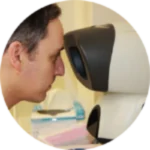
Familiarize yourself with our layout before you come in.
Visit the gallery to take a peek at our Oakville based clinic layout and surgical rooms.
The main options for those dealing with hair loss
If you’ve noticed your hair is thinning, you may be wondering what you can do to slow the progress of your hair loss. The good news is that there are viable options for tackling hair loss effectively.
Hair loss medication
Considering how big of a subject hair loss is in our society, it’s amazing how many people are not aware of the proven treatments that are now available. Although these treatments don’t work for everybody and have varying efficacy rates, they are proven to be effective for the majority who try them and have been approved and or cleared by the FDA and Health Canada.
The two main treatments that are proven to work are finasteride and minoxidil. You’ll probably recognize them better by their brand names – Propecia and Rogaine. Both these treatments are ongoing and must be applied topically or taken orally once a day to maintain results. The FDA has also cleared some forms of laser therapy, including a 272-diode laser cap for treatment commonly referred to as Low-Level Laser Therapy (LLLT).
Do hair loss treatments actually work?
What about side effects?
Both minoxidil and finasteride may produce side effects for those taking them.
Side effects of minoxidil can include scalp irritation and lowered blood pressure. Generally, minoxidil is well tolerated by most individuals. More severe side effects are rare and should be discussed on an individual basis with your doctor as there may be additional factors in play.
Finasteride’s most common side effect is erectile dysfunction and a lowered or weak libido. However, that’s reported in 1% of users – so not something most individuals would experience.
What Other Options do I have?
If for whatever reason you don’t want to take minoxidil or finasteride and you aren’t ready to consider a hair transplant, you do have a few other options. The bad wigs and hairpieces of the past – are just that – in the past. Here are a few modern options to address your hair loss:
Platelet Rich Plasma Therapy (PRP)
PRP therapy is used in hair restoration for natural-looking results. With a thin needle, your own platelet-rich plasma (PRP) is injected into the scalp. Then the growth factors in your blood cells do their job and hair growth is naturally stimulated. It is an injectable treatment which uses the patient’s own blood and has proven effective for both men and women.
Low-Level Laser Cap Therapy
Low-level laser therapy (LLLT) is one of the most effective ways to treat the progression of hair loss today. LLLT has been found to arrest or stabilize hair loss in about 90 percent of patients, and with consistent use, has also been found to stimulate hair regrowth. The best part is that LLLT can be used along with other hair loss treatments and procedures, making it an integral part of any combination therapy regimen for the medical management of hair loss.
You can now get the BIOLIGHT Laser Cap directly from the Toronto Hair Transplant Surgeons.
Instant Hair
Hair fibres are one of the most popular types of concealing products, and when applied to your scalp, will cling to your existing hair to give it a thicker and fuller appearance.
Instant Hair is easily applied by shaking the container of colour-matched hair fibers over your thinning area. The product is made from keratin protein fibers charged with static electricity to stay in place even in strong winds and hard rain. The transformation looks so real that the product fibers are virtually undetectable to the human eye. Instant Hair is completely safe to use and works well with other hair growth aids such as Minoxidil, Rogaine or Propecia. The application usually takes less than a minute and is easily removed with a simple hair washing.
Use a shampoo containing ketoconazole
A third treatment that has been proven to be effective at tackling hair loss – is called ketoconazole. Found in shampoos – this may be a great entry point into addressing your thinning hair. Ketoconazole helps reduce inflammation in the scalp which allows for healthier hair growth. There are many great hair-loss shampoos that contain ketoconazole, including Regenepure DR and Lipogaine Big 3.
The number one question that new hair loss sufferers have is – do they actually work? The short answer to that question is yes. The more accurate answer is, for most people and to varying degrees. Let’s look at how each drug or treatment works and what the science behind them is.
Finasteride
Finasteride was first made commercially available in the late 90s and is the only FDA-approved treatment available on the market that’s proven to lower DHT levels and halt/reverse hair loss in men. The way finasteride works is that it inhibits the main hormone responsible for hair loss in men – dihydrotestosterone (DHT). (This treatment is specific to men and is not prescribed for women.) By inhibiting DHT at a systemic level, it halts and, in some cases, reverses hair loss.
While finasteride is certainly effective for the majority of men (83% to be exact), it is most effective when used as a preventative treatment. That is to say – men who have complete hair loss cannot realistically expect to grow back a full head of hair. Those suffering from mild to moderate thinning at the crown can typically expect their hair loss to be slowed down and in some cases, experience regrowth.
Minoxidil
Minoxidil, better known by its brand name Rogaine, is another clinically proven treatment for hair loss. It works in a different way to finasteride by opening the blood vessels in the scalp which essentially means it increases blood flow to the hair follicles and therefore encourages hair growth.
Minoxidil is the only treatment available that has been shown to slow down hair loss in women, as well as trigger new growth. It can be applied either through a dropper in the form of a liquid or foam solution. And while minoxidil has been proven to be effective, the results do vary quite significantly.
As with Finasteride, Minoxidil is most effective when used as a preventative measure rather than a way to get back a lot of hair.
Hair Loss Scam or Miracle?
To avoid hair loss scams, you need to be educated and aware of what truly causes hair loss and also very importantly, what results you can realistically expect from treatments. Treatments that are effective will typically slow down further hair loss and give you some regrowth. This point emphasizes that it’s not a bad idea to seek treatment sooner rather than later. Massive regrowth, where a person goes from being completely bald to having a full head of hair, is not possible with the treatments currently available.
As far as hair loss medications are concerned, there are only two products available on the market that have been scientifically tested and approved by the FDA. They are finasteride (Propecia) and minoxidil (Rogaine). These two treatments have been subject to thorough scientific trials and have been proven effective in slowing hair loss and regrowth of hair, in the case of minoxidil.
Types of products to avoid
Laser combs – Laser combs are notorious in the hair loss industry, since they’re typically very expensive and have no real scientific proof as to their effectiveness. They should be avoided at all costs.
Topical treatments without any clinically proven ingredients – Any topical treatment that claims to stop hair loss/regrow hair, whether it’s a shampoo, cream or gel, needs to contain at least one ingredient that’s been proven to stop hair loss. If not, it’s unlikely to help at all.
Grey area treatments
Of course, not every hair loss treatment that hasn’t been scientifically proven to work is necessarily a scam. Below are a couple of treatments that fall into this grey area.
Herbal treatments – Herbal treatments are generally ineffective when it comes to hair loss. There’s no scientific basis for herbal treatments working for hair loss, whether taken orally or applied topically.
Thickening shampoos – There are shampoos that will thicken and increase the health of hair, but do not stop hair loss. These shampoos can sometimes be sold as hair loss treatments, which is quite disingenuous, as most of them do not inhibit DHT or contain ketoconazole to promote growth. What you should be looking for is to use organic shampoo and conditioners that are free from things like sulphates and other harsh chemicals. Learn more about what to look for and look out for in your daily hair products here!
The best diet for strong, healthy hair is one that contains lots of protein, vitamin D and omega-3 fatty acids. Salmon and walnuts are both excellent foods to eat for healthy hair. Wondering more about simple things you can adjust in your diet – here’s a link to some great tips on the vitamins essential to hair growth.
Should I get a hair transplant immediately?
If you’ve only just started noticing your hair thinning, it’s better to try the available hair loss treatments first to see how much success you have with them. It might be the case that you’re able to get back any hair you’ve lost and keep it without the need for a hair transplant.
50% of hair is gone before it becomes noticeable
This is one of the scariest stats regarding hair loss. Most men believe they started losing their hair once it was visibly apparent, but it could have started a lot earlier. This is because 50% of your hair is already gone before it becomes visible. This is why it’s always better to get treatment as early as possible, so you don’t have to make up for lost ground later on.



